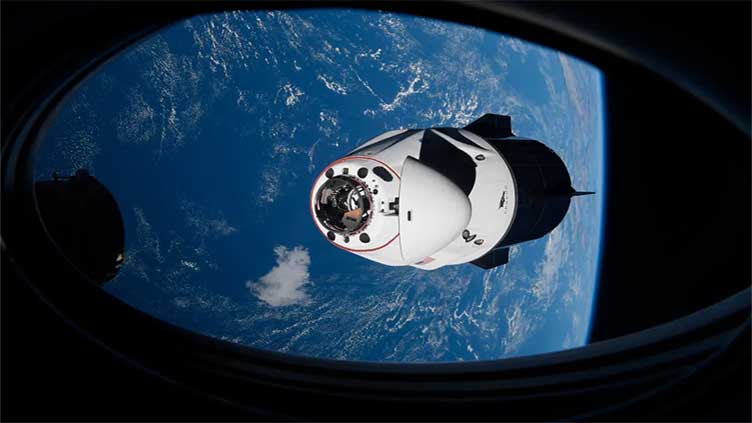SpaceX to bring Nasa space station down

Technology
It may seem like the end of an era for Nasa
(Web Desk) - A SpaceX capsule will guide the International Space Station back into orbit to burn up, with its remains plummeting into the ocean.
Elon Musk's company won a $843 million contract to bring the aging station down in 2031, once it hits the 32-year mark.
While it may seem like the end of an era for Nasa, the agency is optimistic about the future.
Private companies are anticipated to launch their own space stations in 2030, to ensure scientific research continues smoothly through the transition period.
This strategy will give Nasa more time and resources to focus on travel to the Moon and Mars.
However, these plans are only tentative for now, and the agency could elect to extend the station's life if commercial outposts are not constructed in time.
The ISS launched in 1998 as a collaboration between Russia and the United States, with astronauts moving in two years later.
Europe, Japan, and Canada contributed to building the enormous space laboratory, helping the ISS grow to the size of a football field by 2011.
Nasa says the station was never intended to be dissembled in orbit, as such effort would be costly and risky to the astronauts taking it apart.
SpaceX plans to use a supersized Dragon capsule similar to the ones that carry supplies to the ISS.
However, this spacecraft will feature a much larger trunk housing 46 engines - a record-breaking feat.
The Dragon capsule will be launched one and a half years before the station plunges to its death.
It will push the ISS into Earth's atmosphere roughly a year after the complex drifts down from its natural orbit.
Astronauts will still be on board as the station is slowly lowered closer to Earth.
"We'll leave the crew on board as long as possible, so they're available to help maintain station and keep it healthy," ISS Program Manager Dana Weigel told reporters during a press briefing Wednesday.
Six months before the station's demise, the crew will return home.
As it hurtles into the atmosphere, the ISS won't magically disintegrate - Nasa expects some pieces to survive, ranging in size from a toaster oven to a sedan.
These pieces will land in a debris field roughly 1,200 miles long.
While Nasa has held off on spelling out an exact location, the agency named the South Pacific Oceanic Uninhabited Area around Point Nemo in a 2022 report.
Point Nemo is an infamous "rocket graveyard" where plenty of other projects have wound up.
Dubbed "the most remote point on Earth," it sits in the middle of the South Pacific, nearly 1,700 miles from the nearest piece of land.
Global space mega powers like the U.S., Russia, and Europe were thought to have crashed more than 263 space-related objects into the South Pacific between 1971 and 2018.
Nasa's first space station, Skylab, crash-landed in 1979, sending debris raining onto Western Australia despite aiming for the Indian Ocean.
The agency had hoped one of the first space shuttle crews could use a rocket to control Skylab's descent, but it wasn't ready in time.



